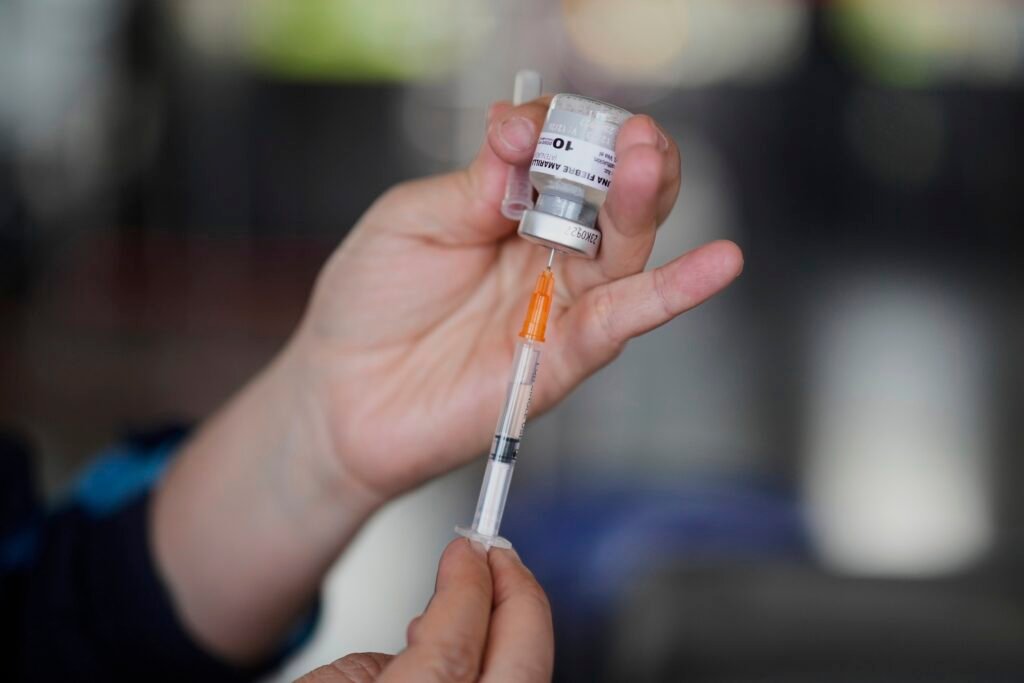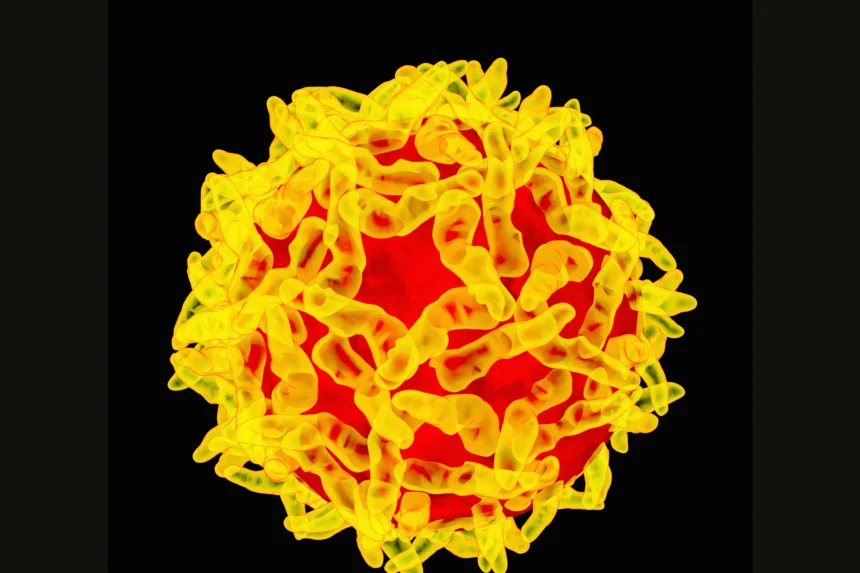Introduction
The yellow fever outbreak in Colombia has raised significant public health concerns as the country reports a surge in infections and fatalities. Since September 2024, multiple departments across Colombia have reported confirmed cases, prompting the government to declare a nationwide health emergency. Yellow fever, a viral disease transmitted by infected mosquitoes, poses serious health risks, especially in regions where vaccination coverage is low. Understanding the scope of the outbreak, the response strategies, and preventive measures is critical for both residents and travelers.
Overview of Yellow Fever
Yellow fever is a viral infection caused by the yellow fever virus, which primarily spreads through the bite of infected Aedes and Haemagogus mosquitoes. While many individuals experience mild symptoms or remain asymptomatic, severe cases can lead to jaundice, liver failure, and death. The disease occurs in phases: an initial acute phase with fever, headache, and muscle pain, yellow fever outbreak in Colombia and a toxic phase affecting the liver, kidneys, and other vital organs. Vaccination is the most effective preventive measure, and public health agencies globally advocate widespread immunization to control outbreaks. https://www.cdc.gov/yellow-fever

Current Situation in Colombia
Colombia’s Ministry of Health has officially declared a nationwide health emergency due to the active circulation of yellow fever. Since September 2024, there have been 75 confirmed cases and 34 deaths linked to the virus. This surge has alarmed public health officials and prompted immediate interventions to prevent further spread. The declaration of emergency enables the government to mobilize resources, implement vaccination campaigns, and restrict movement in high-risk areas to contain the outbreak.
Spread Across Regions
The outbreak has affected nine of Colombia’s 32 departments, including Tolima, Meta, Amazon Basin, and the Magdalena River region. Notably, cases have also appeared in historically low-risk areas, such as the coffee-growing region of Caldas. The widespread geographic distribution underscores the aggressive nature of the outbreak and the challenges faced by healthcare providers in tracking and managing infections.
Case Count and Fatalities
Since the onset of the outbreak, the Colombian health authorities have reported 75 cases and 34 deaths, highlighting a high case fatality rate. Rural areas are particularly impacted, with limited access to healthcare facilities and slower response times. Ongoing surveillance and case reporting are critical to understanding the trajectory of the outbreak and allocating resources effectively.
Government Health Emergency
The Colombian government’s decision to declare a health emergency allows for rapid deployment of medical personnel, resources, and vaccination teams. President Gustavo Petro emphasized the urgency of nationwide vaccination, targeting all citizens older than nine months. Emergency measures also include economic interventions and travel restrictions in critical regions to minimize the spread of the virus.
Travel Alerts and Restrictions
Travel to areas with a critical presence of yellow fever has been restricted, particularly during high-travel periods like Easter weekend. The government advises travelers to receive the yellow fever vaccine before visiting high-risk zones. International travel advisories have also been issued, and health authorities recommend that both residents and visitors adhere strictly to mosquito prevention measures, including the use of repellents and protective clothing.
Vaccination Strategy and Coverage
Vaccination remains the cornerstone of yellow fever prevention. The Colombian government has mobilized more than 20 immediate response teams to administer the single-dose vaccine. Full vaccination coverage is expected within two months to curb the outbreak. The vaccine is recommended for anyone older than nine months, and medical teams are prioritizing high-risk areas first.
Symptoms and Phases of Infection
Yellow fever typically begins with nonspecific symptoms, including fever, headache, muscle pain, loss of appetite, nausea, and vomiting. For some patients, a second, more severe phase develops with jaundice, abdominal pain, bleeding, and organ failure. Mortality rates are particularly high among those who progress to the toxic phase, highlighting the importance of early detection and intervention.

Diagnosis and Treatment Challenges
There is no specific antiviral treatment for yellow fever. Management primarily involves supportive care, including hydration, rest, and monitoring for complications. Diagnosis requires laboratory testing, which can be challenging in rural regions due to limited infrastructure. Rapid identification and isolation of cases are essential to prevent community spread.
WHO and International Response
The World Health Organization (WHO) monitors yellow fever outbreaks globally, providing guidance on vaccination, surveillance, and containment strategies. International collaboration is critical for ensuring vaccine availability, laboratory support, and technical assistance to affected countries like Colombia.
Public Health Preparedness
Colombia’s health emergency includes strengthening hospital preparedness, increasing laboratory testing capacity, and expanding community health education. Public awareness campaigns emphasize vaccination, mosquito control, and early recognition of symptoms to reduce mortality.
Political and Public Reactions
The health emergency declaration has sparked debate among political figures. While some praise the swift government action, others argue that interventions came too late, given that the outbreak began months earlier. Public compliance with vaccination campaigns and mosquito control measures remains essential for outbreak control.
Community Outreach and Education
Educating communities about mosquito bite prevention and vaccination is critical. Health teams are conducting door-to-door campaigns, distributing educational materials, and partnering with local leaders to ensure widespread awareness of yellow fever risks.
Economic and Travel Impacts
The outbreak has affected travel, tourism, and commerce in Colombia. Restrictions on movement and advisories against visiting high-risk areas have economic consequences for local businesses and the national economy. Implementing preventive measures while minimizing disruption is a balancing act for authorities.
Prevention and Control Measures
Preventive strategies focus on vaccination, mosquito control, and personal protection. Eliminating breeding sites, using insecticides, and promoting the use of mosquito nets and repellents are essential components of outbreak containment. Public adherence to these measures can significantly reduce infection risk.
Historical Comparisons
Yellow fever outbreaks have historically occurred in Colombia, but current case numbers and geographic spread are unprecedented in recent decades. Comparing past epidemics provides insight into effective interventions and lessons learned for improving public health responses.
Role of Healthcare Workers
Healthcare professionals are at the forefront of managing the outbreak, from diagnosing and treating patients to implementing vaccination campaigns and educating communities. Protecting healthcare workers with appropriate equipment and training is vital for maintaining effective response capacity.
Global Surveillance and Risks
Yellow fever remains a global health threat, particularly in tropical regions. Surveillance systems track outbreaks, identify high-risk populations, and facilitate timely international response. Ensuring vaccine supply and monitoring cross-border transmission are key to preventing wider spread.
Conclusion and Future Preparedness
The yellow fever outbreak in Colombia underscores the need for robust public health systems, widespread vaccination coverage, and ongoing community engagement. Continued surveillance, timely response measures, and global cooperation are essential to preventing future outbreaks and minimizing health and economic impacts.




